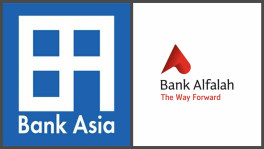Bangladesh yet to tap $22bn export potentials
The LDC graduation might put Bangladesh in a more vulnerable position following a loss of duty-free benefits

At a time when Bangladesh's single-product export base is struggling to cope with the global market vulnerability amid the pandemic, studies show a ray of hope that the country could earn $22 billion more annually if liberal market access could be utilized with diversified items.
Europe, the Americas, Japan and China are among the potential markets for the additional amount, which is more than half of the country's current export earnings.
The Economic Relations Division (ERD), in a study, finds that $18.34 billion worth of export potentials remain unexplored in the top ten export destinations, while another study of the Research and Policy Integration for Development (RAPID) says there is a scope of at least $4 billion in export earnings from China alone.
Experts say every country except for the US is offering duty-free access for Bangladeshi products to its market, but Bangladesh cannot cash in on it in the absence of necessary initiatives of the government and the private sector.
Besides, the country is losing its competitive edge in global trade because of an overdependence on a single product and inadequate measures to ensure standards certification, they add.

The LDC graduation might put Bangladesh in a more vulnerable position following a loss of duty-free benefits, they also say.
Exporters and economists identify two main reasons for the country's failure to tap the unexplored potentials in top export destinations. The first one is the non-diversification of the country's export basket, and secondly, an inability to maintain the quality of products. A lower inflow of foreign direct investment is also hurting its trade potential.
They also say the readymade garment sector apart, other sectors are not getting the kind of attention they need. As a result, the country cannot exploit the potential of exporting leather products, plastics, jute products, agricultural products, home textiles, frozen fish and many more.
In the last fiscal, no sectors other than agriculture, home textiles and jute goods alongside the major contributor, the RMG sector, hit the 1$ billion mark in export earnings.
According to the ERD report, only six export sectors - RMG, leather, pharmaceuticals, plastics, footwear and shrimp have the potential to bag $18.34 billion more, while their current export earnings stand at $31.21 billion.
On the other hand, apparel exporters claimed that the RMG sector has the potential to add another $20 billion to its current contribution through producing human-made fibre-based products for the current buyers and existing markets.
They are working with the government to set up an innovation centre to diversify products, they added.
The government has also offered a tax holiday facility for bringing in investment in the human-made fibre industry from FY21.
Besides, the International Finance Corporation (IFC), a member of the World Bank Group, has also been working with the government and leather, plastics and light engineering sector entrepreneurs to diversify the export basket and enhance their competitiveness in the export market.
Leather sector entrepreneurs say they will not be able to explore the global market without the Leather Working Group (LWG) certification for the Savar leather industrial park.
The ERD study styled "In the shadow of the pandemic: Implication and required action" has found that Bangladesh has failed to grab the potentials of the top ten export destinations, even though in some markets, half of the opportunity has remained untapped.
The estimations carried out by Professor Mustafizur Rahman, a distinguished fellow of the Centre for Policy Dialogue (CPD), indicates that Bangladesh has significant untapped potentials both in terms of markets and products.
The study also mentioned that towards sustainable graduation, both domestic measures and international support will be required to realise these potentials.
According to the Export Promotion Bureau (EPB), only the apparel sector has been contributing about 81% to export earnings although Bangladesh exports a total of 31 types of products to over 200 countries across the world.
According to the study, Bangladesh has a scope to export an additional $3.2 billion worth of goods to the US market beside the current $6.3 billion.
Exporters said exports to the market are not growing mainly because of some tariff barriers.
The data also indicates that in key markets, Bangladesh's competitive edge is being gradually eroded even in the particular case of its dominant apparel sector.
For example, China in the US market is being increasingly taken over by Bangladesh's competitors such as Vietnam and Cambodia, the report said.
The ERD study also mentioned that Bangladesh has the scope to increase its export volume by another $3.6 billion to Germany, $2.2 billion to the UK, $1.7 billion to Spain, $1.9 billion to France, $1.2 billion to Poland, $1.3 billion to Italy, $1.6 billion to the Netherlands, $500 million to Canada and $800 million to Japan.
Evaluating trade gap data, the study also said within the existing top six export items, apparel products have the potential to export over $17 billion more.
Besides, footwear, plastics, pharmaceuticals, leather and shrimp sectors are yet to exploit $1.29 billion of export potential.
The country is on the path of returning to normalcy after a pandemic-hit period, with its exports raking in $38.75 billion in FY21, recording a growth rate of 15.10%. The growth is riding on RMG export recovery, which earned $31.45 billion showing a 12.55% growth, according to the EPB.
Dr M Masrur Reaz, chairman of the Policy Exchange Bangladesh and former senior economist at World Bank Group, said, "We cannot supply products as per the global market demands. Our earnings from other sectors apart from the RMG sector is very low. We could export footwear items to Japan, but we do not have quality products."
There is a huge potential for agricultural products, but the sector's contribution is only about 2.5%, he said adding, "We are unable to capitalise on the potential because of low food and phytosanitary standards."
The country needs to acquire sample certification from Singapore. Many countries have a mutual recognition agreement to facilitate this, but Bangladesh has no such deal with any country, he also said.
The global market for halal food amounts to $2.4 trillion. "Our exports to this market are almost zero as we do not have a halal certification system. Similarly, we are not able to export light engineering products as per the standards of European and US markets," Masrur said.
"We cannot sell products at competitive prices because our productivity is relatively low and inland logistics cost is high, which eats up a big part of the whole. Bangladesh is one of the worst performers in providing logistics support."
Raw materials meant for many products are import-dependent. Raw materials for readymade garments can be imported without paying duty under the bond facility. But other products are deprived of such an advantage, he said.
"We need to sign Free Trade Agreement and Preferential Trade Agreement with different countries, but we do not have any such deal with anyone except Bhutan," he added.
The country could get an advantage in lead time too in a huge market like China. But there is not much attention to it, he pointed out.
World's top exporting country China imports more than $2.5 trillion worth of goods a year. Although Bangladesh's bilateral trade with China is more than $14 billion in the 2020-21 fiscal year, according to Chinese customs data, also mentioned by the Chinese ambassador, Bangladesh exported only $680 million worth of goods to the country, of which 40% was readymade garments.
However, China has been providing duty-free access to most of Bangladesh's products under LDC since 2011. And from 1 July last year, this zero tariff facility has been extended to a total of 8,256 products.
Research conducted recently by a team of three researchers headed by Dr MA Razzaque, chairman of Research and Policy Integration for Development (RAPID), showed that Bangladesh's exports to China should be at least $4 billion. It also showed that Bangladesh could not harness even 30% of its export potential in the Chinese market.
Exporters and experts say the kind of public-private initiative needed to capture the Chinese market is simply not there. The BKMEA attended a fair in China in 2005, but there was no more participation after that.
Citing the example of one of his own buyers, BKMEA First Vice President Mohammad Hatem said the buyer had spoken to him about an order for a garment made of a combination of nylon and polyester, but he could not take it because they did not make that type of garment.
Munshi Faiz Ahmad, Bangladesh's former ambassador to China and former chairman of the Bangladesh Institute of International and Strategic Studies (BIISS), told The Business Standard that China has given Bangladesh many opportunities. "But if we can't make what they need, then exports can't be increased. We also do not have an organised study on how to increase exports to China."
He also said, "The spare parts of the products that China is making are being made in other countries. We are not looking there."
Echoing Faiz, Dr Ahsan H Mansur, executive director of the Policy Research Institute, said, "All our export products are basically finished goods. We are not able to take advantage of the possibility of exporting such parts as intermediate goods. China imports spare parts for many products from abroad and Bangladesh could be part of that supply chain."
Besides, the obligation to add 40% value to local products for exports to the Chinese market is one of the obstacles to increasing exports to the country, said Khondaker Golam Moazzem, research director at the Centre for Policy Dialogue (CPD).
Apart from this, the gradual reduction in tariffs for other exporters to China under MFN (Most Favoured Nations) has created more competition for Bangladesh, said Dr Mostafa Abid Khan, an international trade expert and former member of the Tariff Commission.
In 2011 when most of Bangladesh's products enjoyed duty-free access to the Chinese market, other countries had to pay 16% duty. But under the MFN, China has gradually reduced tariffs for those countries to about 6% in 2018, which means Bangladesh's preference margin in the Chinese market has decreased, exposing the country to stiff competition, he observed.


 Keep updated, follow The Business Standard's Google news channel
Keep updated, follow The Business Standard's Google news channel



















